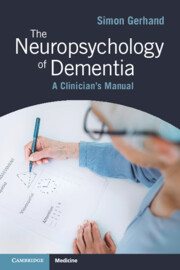Book contents
Section 2 - Diagnosing Different Types of Dementia
Published online by Cambridge University Press: 25 October 2024
- Type
- Chapter
- Information
- The Neuropsychology of DementiaA Clinician's Manual, pp. 59 - 130Publisher: Cambridge University PressPrint publication year: 2024

